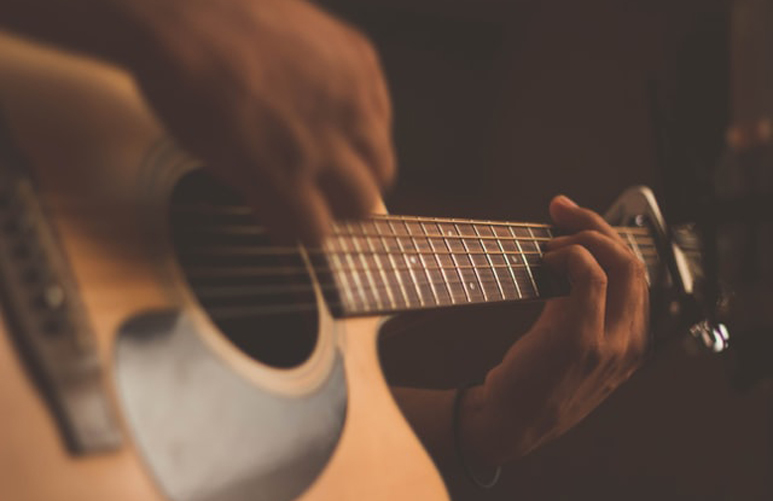为什么有些神曲那么洗脑?是不是有毒!研究:是的 Mathematicians discover music really can be infectious
中国日报 2021-10-06 08:00

“你爱我我爱你,蜜雪冰城甜蜜蜜......” 前段时间,每当CD君闭上眼睛,脑子里就自动循环播放这段抖音神曲。

你是不是也在问,为什么这些歌曲那么洗脑?!是不是有毒!
对了,还真是像病毒一样!加拿大最近一项研究发现,音乐的下载模式与传染病的流行曲线非常相似。

Dora Rosati, lead author of the study and former graduate in maths and statistics at McMaster University in Ontario, Canada along with colleagues, wondered whether they could learn anything about how songs become popular using mathematical tools that are more usually applied to study the spread of infectious diseases.
这项研究的主要作者是加拿大安大略省麦克马斯特大学数学和统计专业的多拉·罗萨蒂,他和他的同事们想知道,是否能用常用于研究流行病传播的数学工具来研究歌曲是如何流行起来的。
The team turned to a database of almost 1.4bn individual song downloads from the now-discontinued music streaming service MixRadio. Focusing on the top 1,000 songs downloaded in the UK between 2007 and 2014, they measured how well a standard model of epidemic disease, called the SIR model, fitted trends in song downloads over time.
这个团队以现已停产的音乐流媒体服务MixRadio中的近 14 亿首单曲下载量作为数据库,集中研究从2007年到2014年间在英国下载的前1000首歌曲,测量了流行病的标准模型(以下简称为 SIR 模型)与歌曲下载量随时间变化趋势的拟合程度。
The research, published in Proceedings of the Royal Society A: Mathematical and Physical Sciences, found the model performed just as well when describing song download trends as it did when describing the spread of a disease through the population.
这项发表在《皇家学会会刊 A:数学和物理科学》上的研究指出,流行病标准模型不仅能描述疾病在人群中的传播,还能准确地描述歌曲的下载趋势。
Rosati said: "It implies that a lot of the social processes that drive the spread of disease, or analogues of those processes, might also be driving the spread of songs. More specifically, it supports the idea that both music and infectious diseases depend on social connections to spread through populations."
罗萨蒂说:“我们的研究说明了许多推动疾病传播的社会过程也可能推动了歌曲的传播。具体来说,它印证了音乐和传染病在人群中传播都依赖社会联系。”
"With a disease, if you come into contact with someone who is ill, then you have a certain chance of catching that disease. With songs, it looks very similar. The big difference is that for songs, it doesn't necessarily have to be physical contact – it could be that my friend used this cool new song in their Instagram story, so now I'm going to go and find it."
“如果你接触到生病的人,那你就有可能感染这种疾病。音乐的传播也是这样。最大的不同点是,歌曲不一定需要身体接触——可能我的朋友在Ins里用了一首很酷的新歌,我也会去找到这首歌听听看。”

Dr Thomas Rawson, a disease modeller at Imperial College London, said: "It's something that makes complete sense, when you consider that word of mouth is something that, much like disease, it will carry on via other people. The main difference is that there are more ways for music to spread."
帝国理工学院的一位疾病模型学家托马斯·罗森博士提到:“口碑就像疾病一样可以人传人,这完全不难理解。至于音乐,它最大的不同是传播途径更多了。”
罗萨蒂的团队还计算了不同音乐类型的基本繁殖数 (R0)——一种流行病学度量,用于描述传染性因子的传染性或传播性。
Although this varied substantially within genres, they found that dance and metal had the lowest median R0 scores at 2.8 and 3.7. Pop music was more transmissible, but it was vastly outstripped by genres such as rock and hip-hop, while electronica – a form of electronic music intended for listening, rather than dancing – had the highest R0, at 3430. This makes it roughly 190 times more transmissible than measles, which has an R0 of about 18.
研究者们发现不同音乐类型的R0值差异很大,舞曲和金属乐的R0中位数最低,分别为2.8 和3.7;相比之下流行乐更具传播性,不过要是拿流行乐和摇滚乐、嘻哈音乐比,那它的传播性又远远不如后两者了。而电子乐(用来听而非跳舞的电子乐形式)的 R0 最高,为3430。要知道,麻疹的R0仅为18,那也就是说,电子乐的感染力是麻疹的 190 倍!
看到这里你可能会问:既然电子音乐传播力那么强,为啥我感觉它们还是挺小众的?
没错,电子音乐的R0高,并不一定意味着它就变得大众化了,而是说明它会在易受影响的粉丝群体中更快地传播。简单理解,就是更容易“圈地自萌”。
"The reason why we might see some really sky-high R0s for songs is that you can just make a tweet and you have already infected a hundred people. You can spread a song disease far quicker than you could an infectious disease." said Rawson.
罗森提到:“我们可能会看到一些歌曲的R0非常高的原因是,你只需发一条推特,就已经感染了100人。歌曲的传播速度比传染病的传播速度要快得多。”
Rosati said: "Maybe what those numbers are telling us is that electronica fans tend to be more passionate about their favourite songs … Or maybe the social network of electronica fans is more strongly connected."
罗萨蒂说:“也许这些数字可以说明,电子乐歌迷对他们喜爱的歌曲更感兴趣……或者电子乐歌迷的社交网络联系更紧密。”
当然,歌曲的传播力还和播放渠道有关。流行音乐以前多在广播里播放,广播无疑有力推动了它们的传播。
但新媒体时代可就不一样了。
"The biggest changes are likely to be in these more niche genres that wouldn't necessarily have been getting the radio play. I think they have a much better chance of spreading in our current situation of streaming and social media platforms," Rosati said.
“对于小众的流派,以前可能没那么多电台播放它们,但在我们目前的流媒体和社交媒体平台中,他们有更好的传播机会。”
If song popularity really is driven by the same contagious processes as disease, it could open new ways of predicting how new music releases could take off, and present opportunities to boost their spread.
如果歌曲的流行真的是由与疾病一样的传染过程驱动的,那么这个研究可能会为预测新音乐的发行开辟新的途径,并极大促进音乐传播。
那么问题来了,带上口罩能不能防止抖音神曲洗脑?
编辑:商桢 焦洁
实习生:张媛
来源:卫报


















 英语点津微信
英语点津微信 双语小程序
双语小程序